From the November 2021 issue of Apollo. Preview and subscribe here.
A Maya Universe in Stone offers a new take on the familiar tale of adventure and archaeological discovery. Rather than telling the story of an intrepid explorer venturing off into the jungle, facing dangerous wildlife or river rapids, and finding a lost city and hidden treasure, the authors set off on an intellectual expedition. Their quest concerns a Maya carving that has already been found – first by such explorers in 1950 and then by looters. They trace its path on to the art market, mourn the loss of knowledge that was a consequence of these clandestine activities and attempt to reconstruct what can still be known about this missing masterpiece, before concluding that its current whereabouts are seemingly unknown. In the acknowledgments, the book’s editor (and one of its authors), Stephen Houston, states his motivations for producing this volume: ‘Is expanding knowledge enough, or must there be some final result, such as the repatriation of an art object to its country of origin? The mind may be satisfied with the first goal, but a sense of ethics demands the second.’ This is, therefore, a timely and important story. As public discussions of looting and repatriations of art grow more common and as collectors and institutions address such issues more openly, this book belongs to a scholarly genre that will only grow. It is essential for these accounts to be written down in order to confront what took place all over the world – what is still taking place in some parts of the world – so that those who follow us may try to avoid repeating it.
Nonetheless, as the authors acknowledge, it remains a difficult story to tell. The book focuses on an intricately carved lintel – the top portion of a door frame – created in AD 773. It was first photographed in situ along with a second lintel by the explorer Dana Lamb in 1950 at a site he came to call Laxtunich. The authors lament, however, that Lamb never precisely logged where the site was; he only circled a large area between Mexico and Guatemala on a map. They reconstruct his trek through the forest using his field notebook, a letter he wrote to his wife Ginger and notes scrawled on the backs of photographs – all of which present conflicting information. The authors ask: ‘What stratagem lay behind such pointless deceit?’ Certainly, he had his reasons. In 2014, Andrew Scherer and Omar Alcover Firpi tried to repeat his journey, taking into account distances and reported landmarks. This impressive endeavour has led them to believe that Laxtunich is most likely a site known as El Túnel, in Guatemala. What might eventually clinch the identification would be finding the backsides of the carvings – called ‘carcasses’ in the field – which were sawn off by the looters to lighten the heavy stones and were presumably dumped nearby.
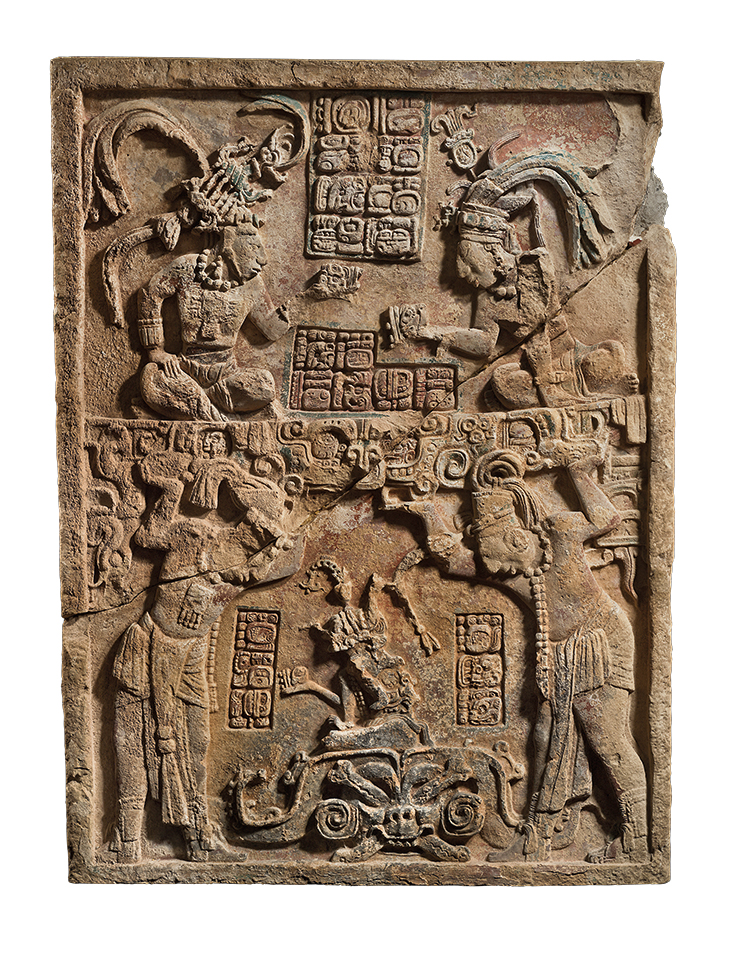
Lintel 1 from Laxtunich (773), Guatemala. Current location unknown. Photo: William Palmer, 1960s; courtesy Getty Research Institute
The authors continue piecing together the fragmented biography of the lintel, relating that it eventually came to be owned by a collector in Falmouth, Maine, possibly by 1968. The lintel, along with the second lintel that Lamb also photographed, as well as a third piece, were all found and photographed in a storage facility in Zurich, in or soon after 1982 – although these photographs are not reprinted in the book. The renowned scholar Linda Schele apparently saw these images in 1990 and discussed them with colleagues. Nonetheless, the more recent history of the lintels is not treated; although Houston indicates ‘their latest reappearance’ allowed for the present study, we are not told when this was or how it came about.
The crux of this book, though, is that these three lintels – plus a fourth in the collection of the Kimbell Art Museum in Fort Worth, Texas – can be convincingly attributed to a single artist. His name was Mayuy. Too often, art-historical writing is descriptive and framed in the passive voice, erasing the maker (something like: ‘The stone was carved with…’). This is a particular problem in the ancient Americas where so many makers went unrecorded. In A Maya Universe in Stone, the sentences that most tingle the spine are where Mayuy is granted the agency of being the subject of a sentence about his work: ‘Mayuy framed the image with a column of hieroglyphs…’ The discussion of his career would be an excellent addition to a syllabus seeking to give space to artists from outside the Euro-American tradition. Indeed, it is this appreciation of Maya art, of specific Maya artists, that may be the most convincing argument for those who cherish Mayuy’s works that his oeuvre, as the authors contend, should one day be reunited.
The book includes a brilliant exegesis of Lintel 1, as it is known, although one that might have benefitted from images other than the one photograph from the 1960s. The highlight is the discussion of Mayuy’s signature. This is not a dissembling scrawl in a lower corner, as in any number of European or American paintings, but boldly occupies the centre of the carved stone. Moreover, the glyphs are inserted into the middle of a depiction of a stone carving, a self-referential statement calling to mind Van Eyck’s Als Ich Can. As the authors point out, the two glyphs of his signature are – like Velázquez looking out from the canvas of Las Meninas – somewhat gobsmackingly inserted into the eyes of a face. While all the other carved figures direct their gazes at each other, it is as if Mayuy is looking straight at us.
In the end, A Maya Universe in Stone tacitly acknowledges that, in spite of the digital revolution – as Mayuy himself would agree – the analogue medium of print remains more durable. Dedicated readers of these authors will realise that the book consolidates a series of more detailed essays originally published in 2017 on Stuart and Houston’s website, mayadecipherment.com and still available in corners of the internet. Obviously, there is much more to say about Lintel 1 from Laxtunich – and the next chapter of its biography remains to be written.
A Maya Universe in Stone, edited by Stephen Houston, is published by the Getty Research Institute.
From the November 2021 issue of Apollo. Preview and subscribe here.
Unlimited access from just $16 every 3 months
Subscribe to get unlimited and exclusive access to the top art stories, interviews and exhibition reviews.

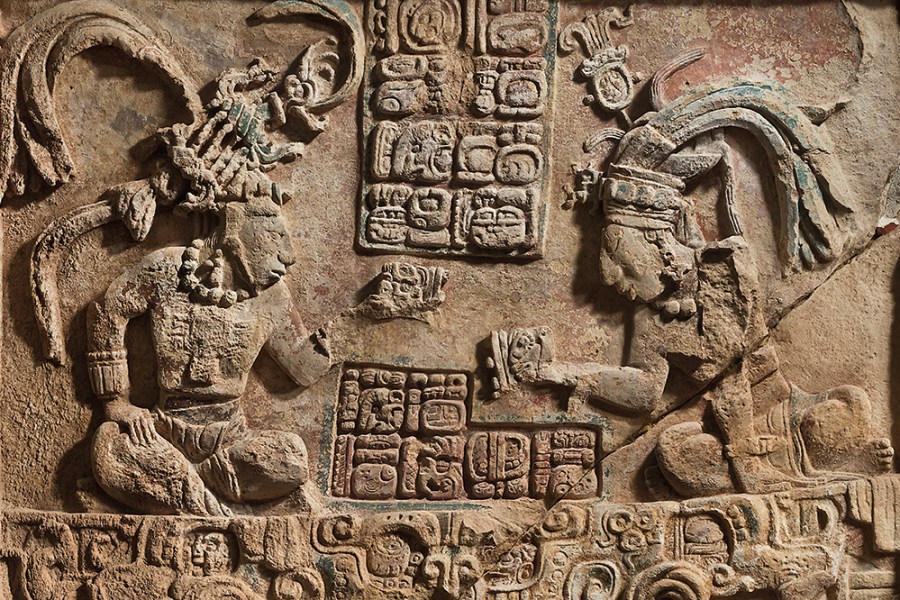
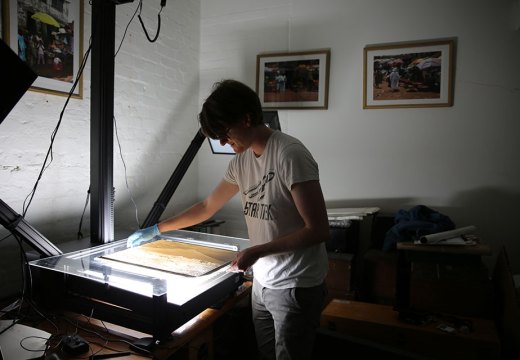
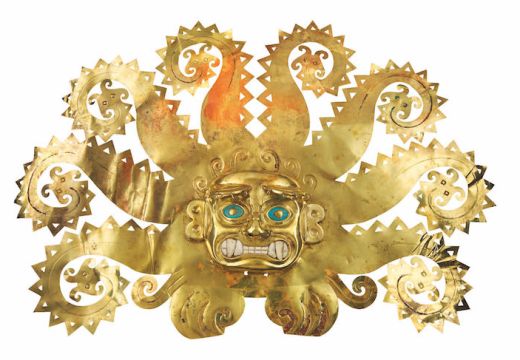
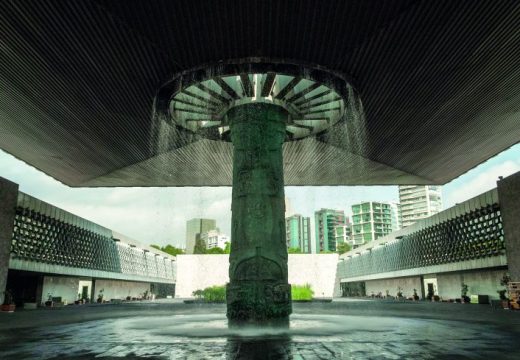









![Masterpiece [Re]discovery 2022. Photo: Ben Fisher Photography, courtesy of Masterpiece London](http://www.apollo-magazine.com/wp-content/uploads/2022/07/MPL2022_4263.jpg)
It’s time for the government of London to return to its rightful home